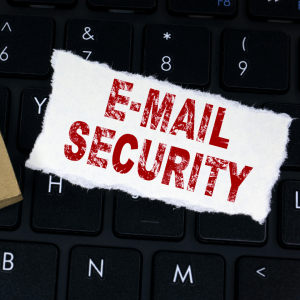Email hosting services are an essential part of any business. They provide a secure and reliable way to communicate with clients, suppliers, and colleagues. Email hosting services come with many benefits, including increased productivity, improved security, and better collaboration. In this article, I will provide a step-by-step guide to maximizing your email hosting services and boosting your productivity.
Introduction to Email Hosting Services
Email hosting services are a type of web hosting service that provides email accounts for a domain name. These services allow you to create email accounts with your own domain name, such as yourname@yourdomain.com. Email hosting services provide many benefits over free email services, such as Gmail and Yahoo. With email hosting services, you have more control over your email accounts, better security, and improved reliability.
Benefits of Using Business Email Hosting
Business email hosting provides many benefits for businesses of all sizes. One of the most significant benefits is the ability to use your own domain name in your email address. This gives your business a more professional image and helps to build trust with your clients and suppliers. Business email hosting also provides better security than free email services. With business email hosting, you can encrypt your emails and protect them from hackers and other online threats.
Another benefit of business email hosting is improved collaboration. With email hosting services, you can create email accounts for all of your employees and share calendars, contacts, and other resources. This makes it easier for your team to work together and stay organized.
Features of Email Hosting Services
Email hosting services come with many features that are designed to improve productivity and collaboration. Some of the most common features include:
- Custom domain names: With email hosting services, you can use your own domain name in your email address.
- Email encryption: Email hosting services provide encryption to protect your emails from hackers and other online threats.
- Shared calendars: Email hosting services allow you to share calendars with your team, making it easier to schedule meetings and appointments.
- Shared contacts: Email hosting services allow you to share contacts with your team, making it easier to stay organized.
- Large storage capacity: Email hosting services provide large storage capacity for your emails and attachments.
- Mobile access: Email hosting services provide mobile access, so you can access your emails and other resources from anywhere.
How to Choose the Right Email Hosting Service Provider
Choosing the right email hosting service provider is an important decision for your business. There are many factors to consider when selecting an email hosting provider, including price, features, and reliability. Here are some tips to help you choose the right email hosting service provider:
- Determine your needs: Before you start looking for an email hosting provider, determine your business needs. Consider how many email accounts you need, how much storage you require, and which features are essential.
- Compare providers: Once you have determined your needs, compare email hosting providers to find the best fit for your business. Look for providers that offer the features you need at a price you can afford.
- Check reliability: Reliability is critical for email hosting services. Look for providers that offer uptime guarantees and have a good reputation for reliability.
- Consider support: Support is essential for email hosting services. Look for providers that offer 24/7 support and have a good reputation for customer service.
Setting Up Your Email Hosting Account
Setting up your email hosting account is a straightforward process. Here are the basic steps to follow:
- Choose a domain name: If you don’t already have a domain name, choose one that reflects your business. A domain name is the part of your email address that comes after the @ symbol. For example, if your business name is XYZ Inc., you might want to choose a domain name like xyz.com or xyzinc.com. A good domain name should be easy to remember, spell, and pronounce.
- Choose an email hosting provider: Choose an email hosting provider that meets your business needs. An email hosting provider is a service that hosts your email accounts on their servers. They provide you with features like security, reliability, storage space, and customer support. Some popular email hosting providers are Google Workspace, Microsoft 365, Zoho Mail, and Rackspace.
- Sign up for an account: Once you have selected an email hosting provider, sign up for an account. You will need to provide some basic information like your name, email address, password, and payment method. Depending on your email hosting provider, you might also need to choose a plan that suits your budget and requirements.
- Verify your domain: Verify your domain with your email hosting provider. This is a step that confirms that you own the domain name that you want to use for your email accounts. The verification process varies depending on your email hosting provider and domain registrar, but it usually involves adding some records to your domain’s DNS settings.
- Create email accounts: Once your domain is verified, create email accounts for your business. You can create as many email accounts as you need, depending on your plan and email hosting provider. For example, you can create email accounts for different departments, roles, or employees. You can also create aliases or forwarding addresses that redirect emails to another account.
- Configure email settings: Configure your email settings, including email signatures, email filters, and autoresponders. Email signatures are the text or images that appear at the end of your emails. Email filters are the rules that sort your incoming emails into different folders or labels. Autoresponders are messages that are automatically sent when you are away or busy.
Configuring Your Email Account Settings
Configuring your email account settings is an essential step in maximizing your email hosting services. Here are some tips to help you configure your email settings:
- Set up email filters: Email filters allow you to sort your emails automatically, making it easier to stay organized.
- Use email signatures: Email signatures are a great way to promote your business and provide contact information.
- Set up autoresponders: Autoresponders allow you to send automatic messages when you are out of the office or unavailable.
- Use email aliases: Email aliases allow you to create multiple email addresses that all forward to your main email account.
Best Practices for Organizing Your Inbox
Organizing your inbox is an important step in maximizing your email hosting services. A well-organized inbox can help you save time, improve your productivity, and reduce your stress. Here are some best practices for organizing your inbox:
- Use folders: Use folders to organize your emails by project, client, or topic. This way, you can easily access the emails related to a specific task or goal. You can also create subfolders to further categorize your emails.
- Archive old emails: Archive old emails to keep your inbox clutter-free. Archiving emails means moving them to a separate folder where they are still accessible but not visible in your inbox. You can archive emails that you have already read, replied to, or completed.
- Delete unwanted emails: Delete unwanted emails to keep your inbox clean. Unwanted emails include spam, junk mail, newsletters, or promotional offers that you are not interested in. Deleting these emails can free up space in your inbox and prevent distractions.
- Use labels: Use labels to categorize your emails and make them easier to find. Labels are tags that you can assign to your emails based on their content, priority, or status. For example, you can label an email as “urgent”, “to do”, “waiting for reply”, or “follow up”. You can also use colors to highlight different labels.
Tips for Boosting Productivity with Email Hosting
Email hosting services provide many features that can help boost your productivity. Here are some tips to help you get the most out of your email hosting services:
- Use email templates: Email templates can save you time by allowing you to create pre-written emails for common tasks.
- Use keyboard shortcuts: Keyboard shortcuts can save you time by allowing you to perform common tasks with a few keystrokes.
- Use scheduling tools: Scheduling tools can help you schedule meetings and appointments more efficiently.
- Use email tracking: Email tracking can help you keep track of important emails and ensure that they are read.
Integrating Email Hosting with Other Productivity Tools
Email hosting services can be integrated with other productivity tools to improve collaboration and productivity. Here are some productivity tools that can be integrated with email hosting services:
- Calendar tools: Calendar tools can be used to schedule meetings and appointments and share calendars with your team.
- Project management tools: Project management tools can be used to manage projects and share documents with your team.
- Customer relationship management (CRM) tools: CRM tools can be used to manage customer relationships and track sales leads.
Troubleshooting Common Email Hosting Issues
Email hosting services can sometimes experience issues that can affect productivity. Here are some common email hosting issues and how to troubleshoot them:
- Email delivery issues
If you are experiencing email delivery issues, check your spam filters and email settings. Sometimes, your emails may be blocked by your recipient’s email provider or marked as spam by mistake. To avoid this, make sure that your email address is verified and that you follow the best practices for email etiquette. You can also try sending a test email to another account to see if it goes through.
- Email storage issues
If you are running out of email storage, consider archiving old emails or upgrading your email hosting plan. Archiving old emails can help you free up some space and organize your inbox. You can archive emails manually or set up rules to archive them automatically based on certain criteria. Upgrading your email hosting plan can give you more storage space and other features, such as custom domains and aliases.
- Email security issues
If you are experiencing email security issues, check your encryption settings and make sure that your email hosting provider has a good reputation for security. Encryption can help protect your emails from being intercepted or tampered with by hackers. You can enable encryption in your email settings or use a third-party tool to encrypt your emails. You should also choose a strong password for your email account and avoid clicking on suspicious links or attachments in your emails.
Conclusion
Email hosting services provide many benefits for businesses of all sizes. By following the steps outlined in this article, you can maximize your email hosting services and boost your productivity. Remember to choose the right email hosting provider, configure your email settings, and use best practices for organizing your inbox. By doing so, you can take full advantage of the many features that email hosting services provide. Get professional email hosting today and start boosting your productivity!
![]()




